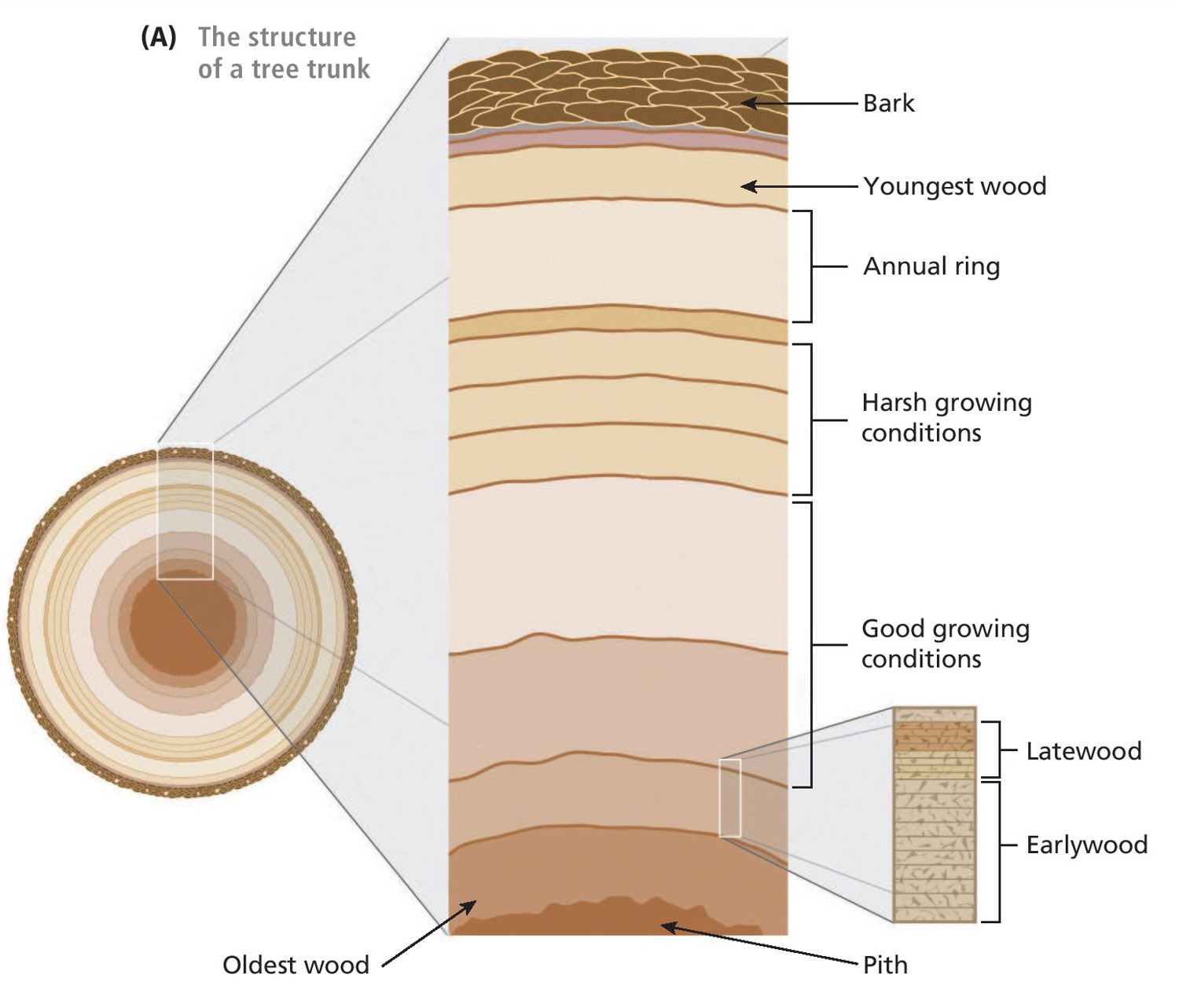
Tree trunks expand by laying down new growth on top of the old growth. The innermost tissues of the trunk are the oldest, the outermost layers are the most recent (see Figure A).
This means that wood across the diameter of a tree trunk has been laid down throughout the life of the plant. Trees do not grow at a constant rate. In temperate regions, when conditions are favourable (e.g. in the spring and summer), trees grow quickly, creating large cells – ‘earlywood’. During the autumn and winter, growth slows and then stops, forming smaller cells – ‘latewood’. When growth starts again in spring, a distinct line is created in the wood. These lines mark the boundaries between growth rings – annual rings – and the width of the ring provides a good indication of what sort of conditions the tree experienced. This means that very old trees (see Figures B and C) provide a detailed record of the history of environmental conditions where they have lived.
Your organisation does not have access to this article.
Sign up today to give your students the edge they need to achieve their best grades with subject expertise
Subscribe




